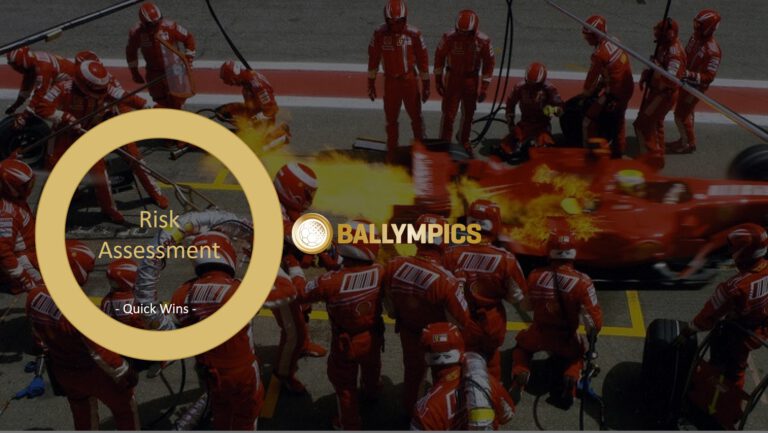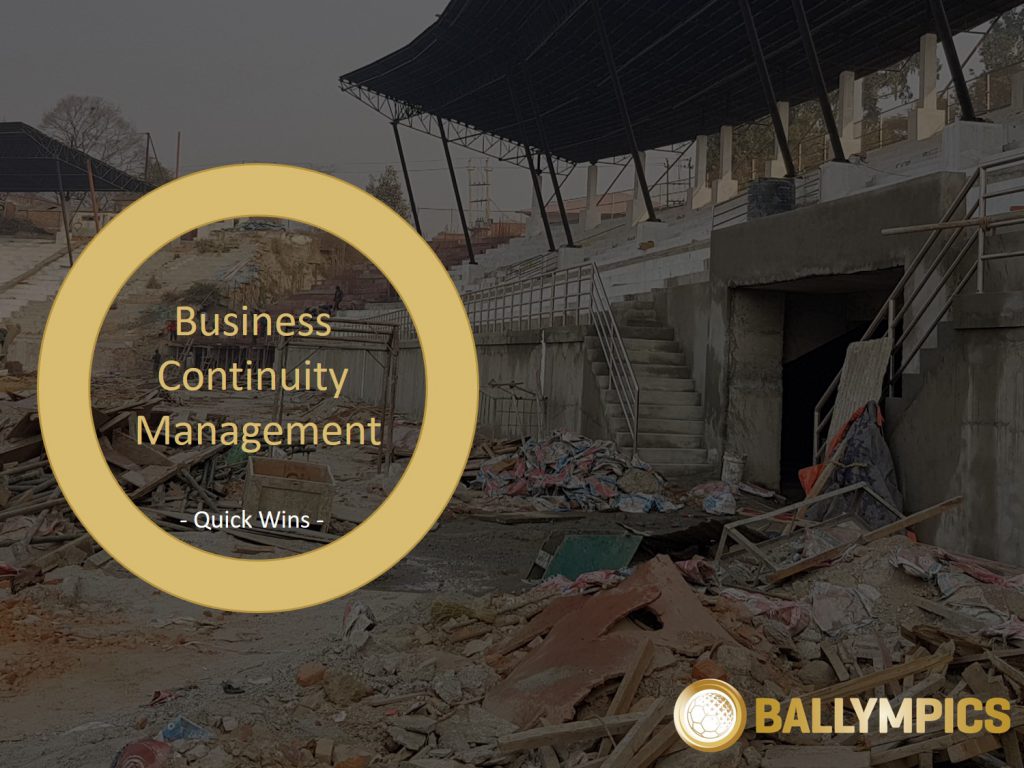News and Articles
Please click on the articles below. For recent updates and pictures, FOLLOW US on LinkedIn, Facebook, Instagram or Twitter.
We are lucky to receive frequent media attention during our projects. Please check out recent impressions by clicking on the button below:
What’s missing in traditional sports businesses during the current crisis? Totally right – (live) sports. No business without the product itself!
Think about Coca Cola, Pepsi or Red Bull trying to make a dollar without being able to produce and ship a single bottle….Hard to imagine.
That’s why (live) sports have to be brought back on the road again! Could this be risky under the current circumstances? Most likely, yes. However, the risks can be assessed, calculated and managed. This is called “Risk Management”.
For large corporations, business continuity management, or BCM, is old hat. Many businesses have had their BCM plans in the drawer for years and can pull them out in times like these or at least use them as a basis for resuming their operations.
Sports organizations on the other hand, have not thought about BCM in the same ways.
Covid-19 is the first pandemic in modern history which has impacted sports on an international scale and led to the cancellation of competitions around the globe costing sports organizations and organizers billions of dollars.
Reducing expenses and revitalizing revenue streams are among the most essential actions for sports organizations in the aftermath of a crisis.
The integrity of sport has been subject to significant challenges over recent years, inter alia given the growth of sports betting, match-fixing, corruption, misappropriation of funds and other criminal activities. Such activities have highlighted the vulnerability of sport to corrupt practices. Sporting bodies are no longer able to deal with the threat and challenges to sporting integrity alone and they will increasingly seek the assistance of expert organizations, consultants and government bodies.
International sports bodies are responsible for and should continue to build on the steps already taken to promote and support good governance at all levels. Higher-level sporting bodies (e.g. international federations) in particular should, where appropriate, support their (national or regional) member organizations in establishing and maintaining appropriate standards of good governance for the sports body concerned.
Nigeria Rugby League is entering into a deal with the international sports management consultancy BALLYMPICS.
Joern Schlimm a Managing Partner at BALLYMPICS said: ” We are looking forward to our long term partnership with the Nigeria Rugby League Association. Our objective is to support the development of the league, establish rugby as a number one sport in Nigeria and create a showcase for the entire continent. We believe that the Nigeria Rugby League has an enormous potential for growth and we are delighted to be part of this journey.”
China has taken major steps to increase the number of football academies in the country. The government is granting special state funds to selected schools to achieve the target of establishing more than 50,000 youth academies by 2025.
Establishing youth academies is crucial and will undoubtedly contribute to football development in China.
However, academies alone will not solve the root cause of challenges in Chinese football development.
To succeed in the future, China must therefore go back and look at their grassroots football first. What still seems to be missing in the country is basic infrastructure at a grassroots level and most importantly, what successful nations call their “football culture”.
China has pumped vast financial resources into its football industry since President Xi Jinping made it clear he wants to see his country qualify for, host and one day win the FIFA World Cup. To increase the attractiveness of the domestic league, CSL clubs have purchased a number of international superstars like Hulk, Alex Teixeira or Jackson Martinez.
However, Chinese officials are aware that increasing the league’s attractiveness is only part of the puzzle. There are many more challenges ahead, especially when it comes to the development of Chinese national players. After a disappointing campaign of the Chinese national team which seems to miss out on another FIFA World Cup in 2018, officials have been desperate to explore ways to improve the performance of Chinese national players in the short run.
Article: Football Development made in China – Getting started
China seems to be making fast progress establishing their youth development infrastructure. Without doubt, their goal is to develop talent as quickly as possible to be able to create a competitive national team as early as 2022.
Football/ soccer in China is supported at the highest levels. China’s president Mr. Xi Jinping has made no secret of his love for the “beautiful game.” He’s also made it clear he wants to see China qualify for, host and one day win, the World Cup.
So consequently, setting up a proper youth development infrastructure for talented young Chinese is a starting point. China’s administration has reportedly named 4,755 primary and middle schools across the country as “specialist football academies” to spearhead campus football development, the Chinese Ministry of Education (MOE) announced.
Article: Dubai 7s Review
Overall, the Dubai Rugby 7s was a well-organized event which drew a large crowd in Dubai over the past weekend.
Below is a comprehensive review of what went well…and where improvements will help make the event even better in 2018.
The venue around the main stadium offered sufficient space to accommodate a number of food and beverage tents, a large official merchandising tent, several entertainment zones and parking for 15,000 vehicles.
There were different zones for different target groups. The “Party Zone” for the party people who wanted to have a drink or two and dance listening to house music. The “Family Zone” for the families to keep the offspring busy. “Street Food” zones for eating and drinking.
Article: Success of Youth Development in Germany
Germany has disappointed its fans at the recent World Cup in Russia. Some may not remember but this is not the first time German football is struggling. But at EURO 2000, Germany was one of the worst teams in the tournament scoring only one goal and finishing last in their group.
Germany, traditionally an enthusiastic soccer nation, was struck hard.
What happened next is a case study in German corporate problem solving: self-reflection (“What went wrong?”), determining the cause (“Why did it happen?), followed by careful top-down management (“How do we fix the system so it never happens again?”).
Soon they discovered the root cause of the problem: Germany’s soccer schools were not producing enough talented players for their clubs and the national team.
To rectify the situation, the German soccer federation (the “DFB”) decided the country needed to invest in better youth development. So in the 2001-2002 season, the DFB began mandating that all clubs in the professional German leagues run their own youth academies.
Media inquiries
For all media inquiries, please contact us at
start@ballympics.com









